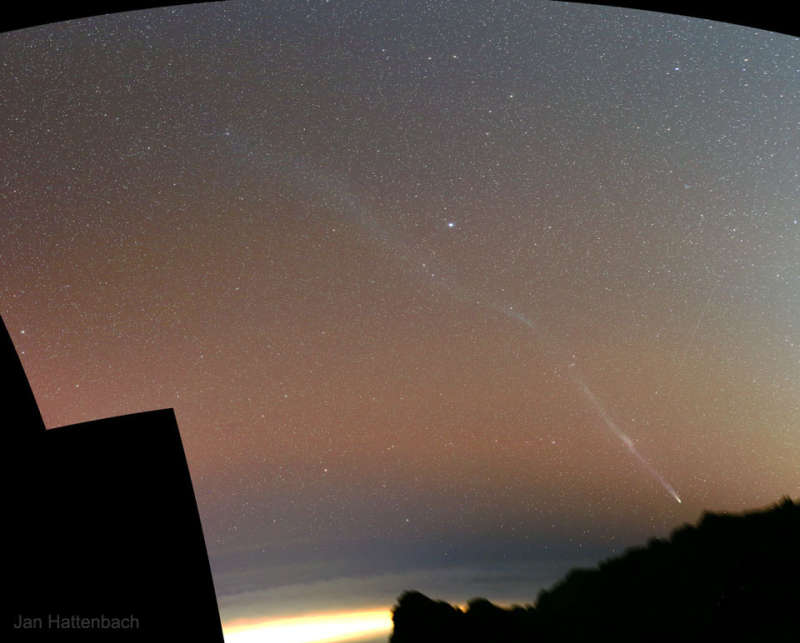
|
Credit & Copyright: Jan Hattenbach
Explanation:
You couldn't see Comet Leonard┴s
extremely long tail with a telescope ┴ it was just
too long.
You also couldn't see it with binoculars ┴ still too long.
Or with your eyes -- it was too dim.
Or from a city ┴ the sky was too bright.
But from a dark location with a low horizon ┴
your camera could.
And still might -- if
the comet survives today's closest encounter with the Sun,
which occurs between the orbits of
Mercury and
Venus.
The featured picture was created from two deep and
wide-angle camera images taken from
La Palma in the
Canary Islands
of Spain late last month.
Afterwards, if it survives, what is left of
Comet Leonard's
nucleus will head out of
our Solar System, never to return.
|
January February March April May June July August September October November December |
| |||||||||||||||||||||||||||||||||||||||||||||||||||||||
NASA Web Site Statements, Warnings, and Disclaimers
NASA Official: Jay Norris. Specific rights apply.
A service of: LHEA at NASA / GSFC
& Michigan Tech. U.
Based on Astronomy Picture
Of the Day
Publications with keywords: comet
Publications with words: comet
See also:
- APOD: 2025 December 1 ┴ 3I ATLAS: Tails of an Interstellar Comet
- APOD: 2025 November 25 ┴ Comet Lemmon and the Milky Way
- 3I/ATLAS: A View from Planet Earth
- APOD: 2025 November 17 ┴ Comet Lemmons Wandering Tail
- APOD: 2025 September 30 ┴ Comet Lemmon Brightens
- APOD: 2025 September 29 ┴ Two Camera Comets in One Sky
- APOD: 2025 September 26 ┴ A SWAN an ATLAS and Mars
